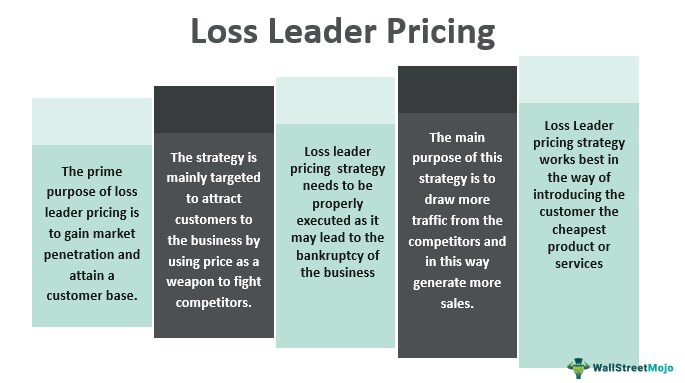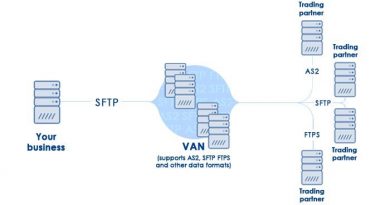Loss Leader Strategy Definition and How It Works in Retail

Loss Leader Strategy: Definition and How It Works in Retail
What Is a Loss Leader Strategy?
A loss leader strategy involves selling a product or service at a price that is not profitable but is sold to attract new customers or to sell additional products and services. Loss leading is a common practice when a business enters a market. A loss leader introduces new customers to a service or product in the hopes of building a customer base and securing future revenue.
Key Takeaways
-A loss leader strategy prices a product lower than its production cost to attract customers or sell other products.
-Loss leading is a controversial and predatory strategy.
-Companies use a loss leading strategy to penetrate new markets and gain market share.
-Large companies can afford to price a product with no margin because they have other profitable products.
-Loss leading strategies can hurt small businesses and suppliers, forcing them to keep their prices low.
Understanding a Loss Leader Strategy
Loss leading can be successful if executed properly. A classic example is razor blades. Gillette often gives away their razor units for free or at a low price, knowing that customers must buy replacement blades to make a profit.
Another example is Microsoft’s Xbox One video game console. The product is sold at a low margin per unit, but Microsoft makes profit from the sale of video games with higher margins and subscriptions to the company’s Xbox Live service. The loss leader strategy is common in the video game industry, with consoles often being sold for less than their production cost.
The loss leader strategy is also known as penetration pricing, as the manufacturer attempts to penetrate the market with low prices.
Opponents argue that loss leader pricing is predatory and designed to force competitors out of business.
Loss Leaders and Retail Shops
Both brick-and-mortar stores and online shops use loss leader pricing strategies. These businesses price a few items so low that there is no profit margin, with the hope that customers will buy other products and become loyal to the brand. However, consumers sometimes leave without buying additional products or subscribing to the brand, a practice known as cherry picking.
Some retailers place loss leaders at the back of their stores to encourage customers to walk past more expensive products. For example, milk is often placed at the back of grocery stores, resulting in increased sales as customers walk by other items on their way to the milk section and back to the register.
Loss Leaders and Introductory Pricing
Introductory pricing can also be a loss leader. For example, a credit card company may offer a low introductory rate to attract clients, but then raise the interest rates. Similarly, cable companies often offer low rates, sometimes at a loss, to attract new customers or lure them away from competitors.
Disadvantages of a Loss Leader Strategy
The greatest risk of a loss leader strategy is that clients may only take advantage of the low prices and not use any other products or services. Additionally, small-business owners complain that they cannot compete with large corporations who can absorb the losses of this strategy.
Suppliers may also experience pressure to keep their prices low to support companies using a loss leader strategy.



